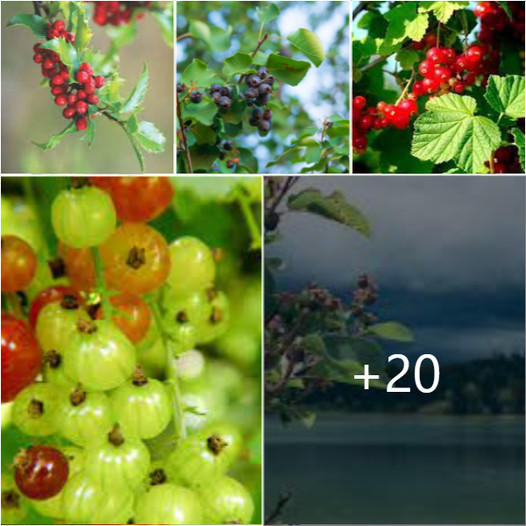Saskatoon
The first is the Saskatoon, or June berry. Native to the Northern Great Plains — Saskatchewan, and Alberta are particularly blessed with wild stands — Saskatoons are very cold-hardy. They are botanically related to apples, look like blueberries and taste, well, like themselves. Different varieties range from tart to sweet, often with a bit of an almond undertone. They’re tasty fresh as well as delicious in jams and tarts. Saskatoon Berry Pie is a Canadian regional specialty.
Saskatoons grow as a bush, and they’re pretty tolerant of conditions. They don’t like clay soil or wet sites, but other than that will perform well on most sites. It’s best to plant them in the spring and lightly mulch — don’t pile it on, especially if your soil tends to be cold and wet in the spring. Pruning is important and is very similar to pruning blueberries, with the goal being to make sure wood over three to four years old is removed and good airflow is maintained.
Honeyberry
The other “early bird” berry is the Honeyberry, or Haskap. Also fruiting very early in the season, honeyberries come from Russia and Eastern Europe. Older, heritage varieties are very tart and astringent, often to the point of being unpleasant to eat fresh. They were a fruit grown for jams and syrups.
Efforts to breed a more commercially viable honeyberry have resulted in the introduction of 50 new varieties in the last 10 years. Much tastier than their predecessors, the newer varieties are often delicious off the bush, if a bit on the tart side. The flavor of honeyberries can be hard to describe — some are reminiscent of raspberries, blueberries, cranberries, and a new introduction called ‘Strawberry Sensation’ makes good on that promise. While the new varieties are good fresh, in jam and pie they become simply magical. Sweet-tart and complex, they’re a new favorite in my house.
Honeyberries are definitely a Northern plant. Hardy to Zone 3, they struggle in areas with very hot summers. Much of the effort in the breeding programs has been to improve heat tolerance. Even in colder climates, after they have produced berries, they go dormant and drop most of their leaves through the heat of the summer.
Both types of berries produce some of the earliest flowers available for bees; a plus if you have hives. And they should be netted if you don’t want to lose all your berries to the birds.
Gooseberry
When it comes to old-fashioned berries, don’t overlook gooseberries and currants.
Gooseberries grow as a shrub, and often both the branches and the berries have thorns. They range in color from green to pink to dark red, and usually the red berries are sweeter out of hand than the green. Just think, if you have your own gooseberries, you can make that quintessential English dessert Gooseberry Fool. And don’t underestimate the allure of a gooseberry pie.
Currant

Currants, while related to gooseberries, are smaller and thornless. White, pink, and red currants grow in clusters, like grapes. Currant jelly is a classic preserve. Pastry chefs brush fresh fruit tarts with melted currant jelly to give them that beautiful, glossy look. It’s also excellent as an accompaniment to roast beef or stirred into beef stew.
Then there are black currants. Dark in color, with a tart but musky flavor profile, black currants are something of an acquired taste. High in antioxidants and vitamin C, black currants are often made into preserves or syrup. Black currant syrup is an essential ingredient in the classic cocktail the Kir Royale. Or it can be stirred into club soda for a refreshing drink.
Both currants and gooseberries are relatively easy to grow, preferring good, well-drained soil and full sun to a bit of filtered shade. One thing to keep in mind is that some states still restrict currants and gooseberries. This is because ribes (the genus that includes currants and gooseberries) are an intermediate host for White Pine Blister Rust, a disease that can decimate mature white pines. Some states or counties ban them entirely and some permit only certain varieties. So, make sure to check with your state Department of Agriculture before you order your plants.
Expand your berry bounty this year, and plant some of the fruit less taken!
Holly Stockley is a veterinarian and heritage-breed genetic biodiversity steward in Western Michigan, where she and her husband are restoring 10 acres of neglected land that includes a walnut plantation. She participates in the Lost Apple Project – Midwest and has started a small orchard of heritage apple varieties, teaching herself to graft. Find Holly at BrambleberryMeadow.com and listed to her Vintage Americana Podcast. Connect with her on Instagram @brambleberrymeadow and @vintageamericanapodcast.
All GRIT community bloggers have agreed to follow our blogging guidelines, and they are responsible for the accuracy of their posts.
